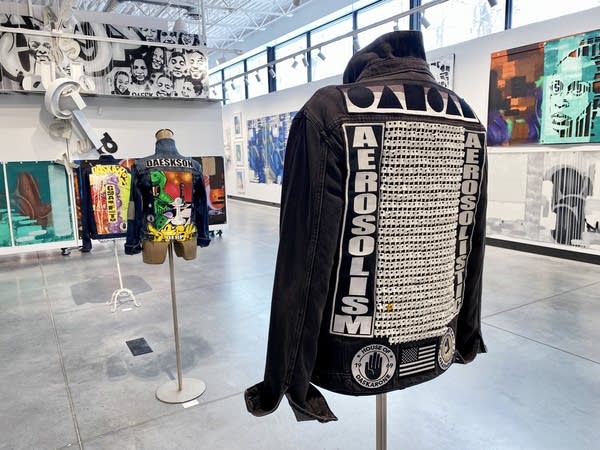American graffiti: Peyton Scott Russell on graffiti as fine art and legacy of Floyd mural
On the last days of the artist’s 40-year retrospective show at the White Bear Lake Center for the Arts, Russell reflects on the dualities of his career

One of Russell's jean jackets is embroidered with hundreds of spray paint nozzles.
Alex V. Cipolle | MPR News
Go Deeper.
Create an account or log in to save stories.
Like this?
Thanks for liking this story! We have added it to a list of your favorite stories.



